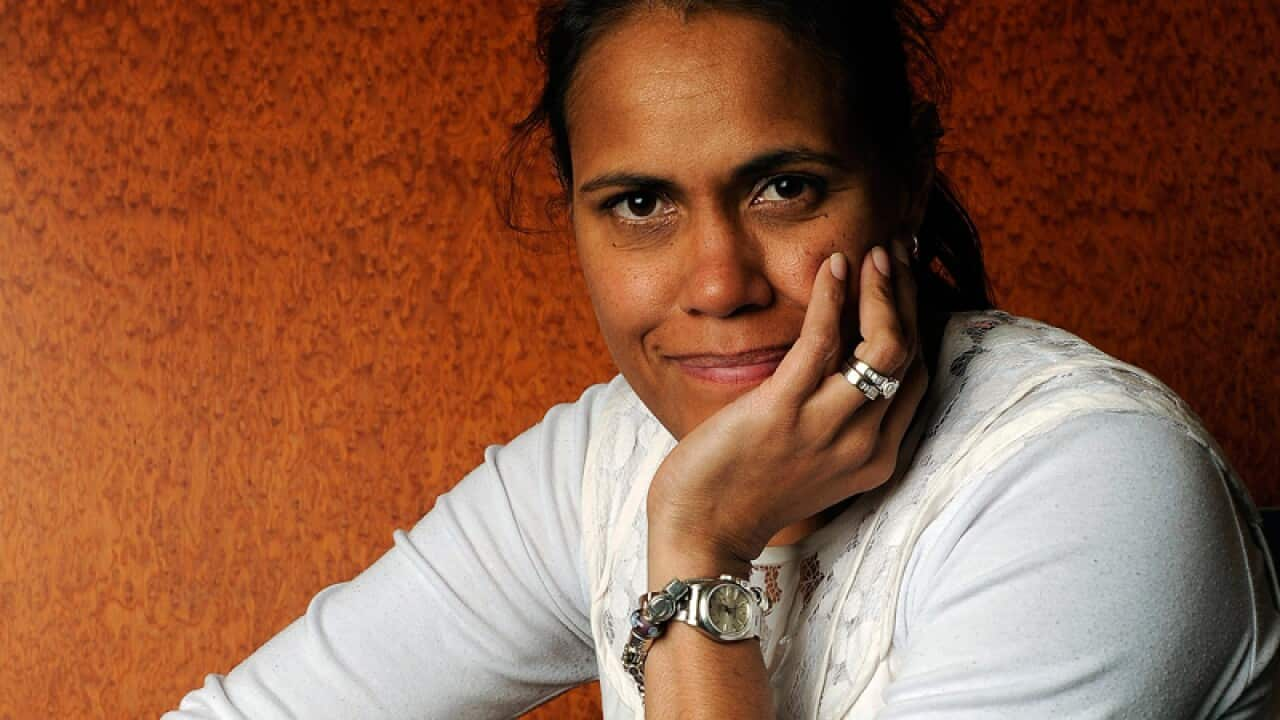This week, 17 years ago, the 2000 Olympic Games took place in Sydney and we were filled with pride as we saw our hopes in lane six.
The stadium was deafening and there she stood in her hooded body suit preparing to run the 400m race with the hopes of the nation on her shoulders.
Cathy Freeman was unabashedly worshipped. She went on to win gold and went down in history not just for winning gold, but for her defiance in the face of criticism for draping the red, black and yellow.
Freeman joined the ranks of Indigenous Australia’s sporting symbols of hope. Notwithstanding the nation claiming her – truth is – she was and is our symbol of hope.
Respected award winning photographer Kamilaroi woman, , has often said that “sport is a microcosm of society” and she is correct. Despite the mainstream claim of Freeman as ‘Australian’, she was a symbol of hope for Indigenous Australia.
When we looked at her on the stadium – we didn’t see her for simply the gold that hung around her neck – we saw the determination and grit, we saw success in spite of obstacles, and we saw the staunch set of her shoulders against the ever present criticism that accompanies being a successful Indigenous person in our country.
Sport in Australia is something that the masses say equalises us, but we know different. We know that sport is a reflection of the world it’s played within. All of the prejudices and issues that exist in society at large, exist in sport itself. So while we look back and celebrate Cathy Freeman for her gold medal and incredible athletic prowess, it is all too quickly forgotten by the masses that Cathy Freeman was threatened with being stripped of any medals she won if she chose to fly the red, black and yellow flag. To do so was to send a political message.
Related Reading

Cathy Freeman: an inspiration to a generation of athletes
Freeman’s defiance earned her criticism from mainstream Australia, but to Indigenous Australia, her stance was respected and she became .
Cathy Freeman’s identity as an Indigenous sporting star was one thwarted with those that sought to undermine her admiration by criticising her acts of cultural pride and labelling them as , but her defiance in the face of this and clear pride in her culture and love of her people became her line in the sand where she made a clear statement about who she is and what and who she represented.
in 1993, in 2015 and countless other Indigenous sporting stars both before and after Freeman have had to make their platforms of influence political because their very identities are political. Being a sporting star in Australia – for the most part – comes with a certain amount of respect and admiration. But if the sporting star is Indigenous, the fame is a double edged sword; there is respect for athleticism but then if a mouth accompanies physique – there is invariably a swathe of criticism.
Being a sporting star in Australia – for the most part – comes with a certain amount of respect and admiration. But if the sporting star is Indigenous, the fame is a double edged sword; there is respect for athleticism but then if a mouth accompanies physique – there is invariably a swathe of criticism.
When Indigenous athletes are vocal or political, there is an instant backlash of people unleashing the vitriol and attempting to put the athletes ‘back in their box’ so to speak. As in the broader society, sport demonstrates how mainstream Australia has no palette for Indigenous political messaging. Mainstream Australia is in denial of history, oppression and those brave enough to stick their necks out to remind them of the truth and shine a light on continued oppression are instantly rewarded with hateful criticism.
Whilst those Indigenous athletes like Freeman are sustaining attacks in the media, the Indigenous community watches. We see what happens when someone speaks out or takes a stand and the instant rebuke by mainstream Australia is both terrifying and bewildering. Seeing someone so admirable copping such hate is confronting but whilst it is easy to face outward and watch the vitriol being thrown – it is more important to look up at the Indigenous athlete that is receiving it.
The staunch resolve on the faces and set of the shoulders of our leaders who receive this criticism is what inspires our youth. Maintaining dignity and unwavering in cultural pride despite the attempts to undermine by those who seek to maintain the status quo of oppression without complaint is the measure of a person, the criteria for a leader in our communities and without a doubt the reason so many of our young ones see our sporting stars as symbols of hope.
Thank you Cathy Freeman for your defiance of those that sought to undermine your message of pride in culture and thank you for all that you continue to do to inspire.
Like the content? Follow the author




